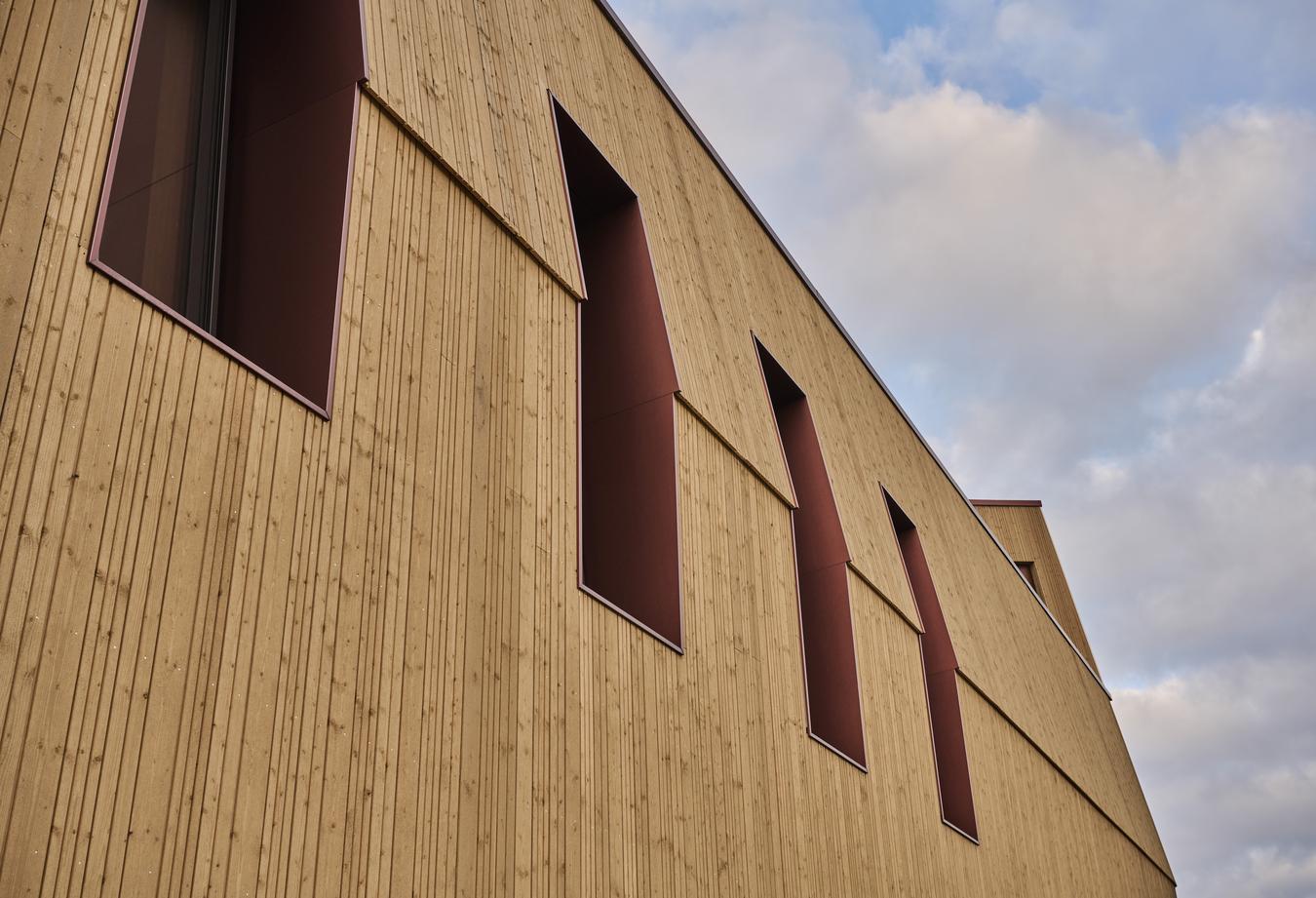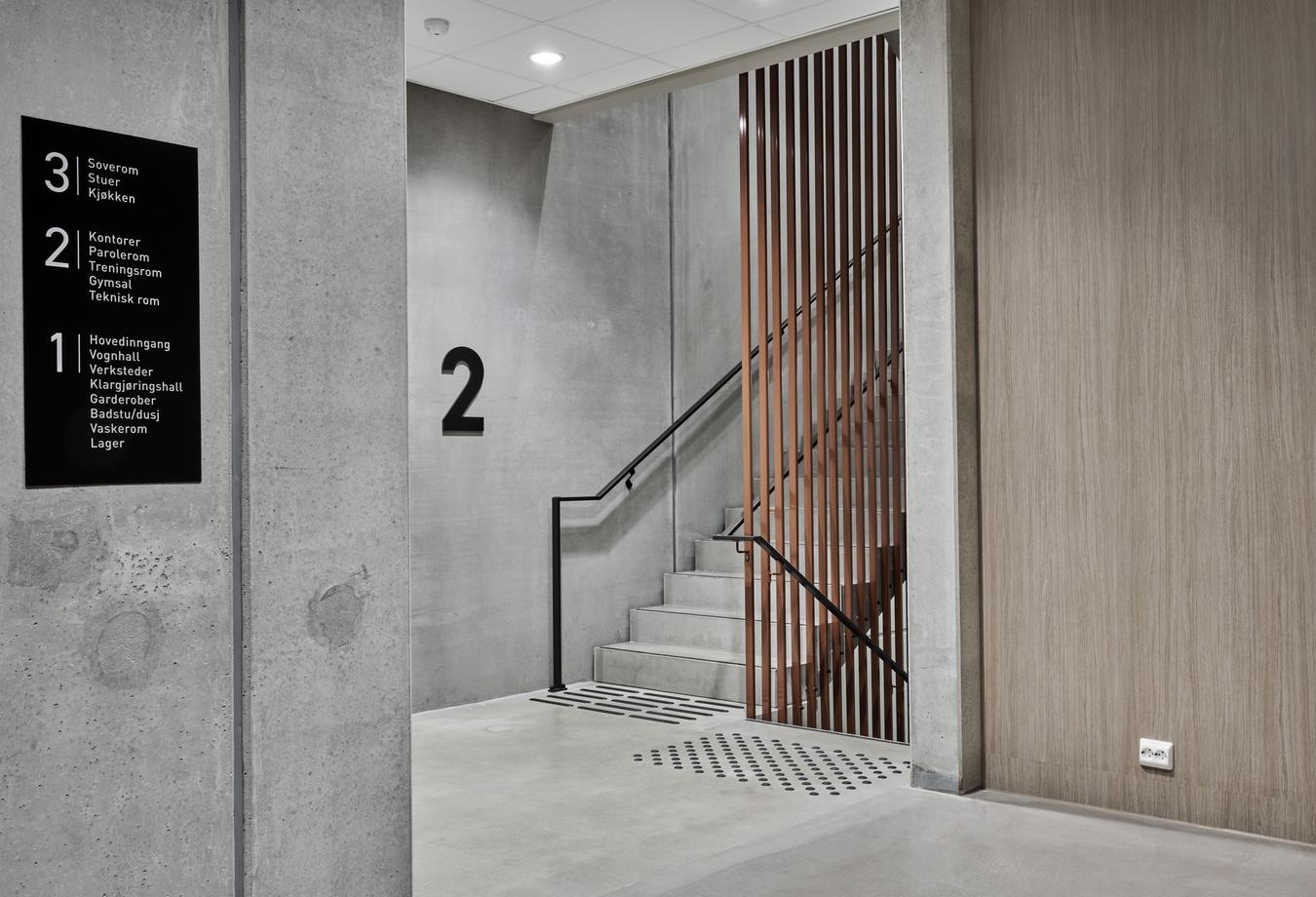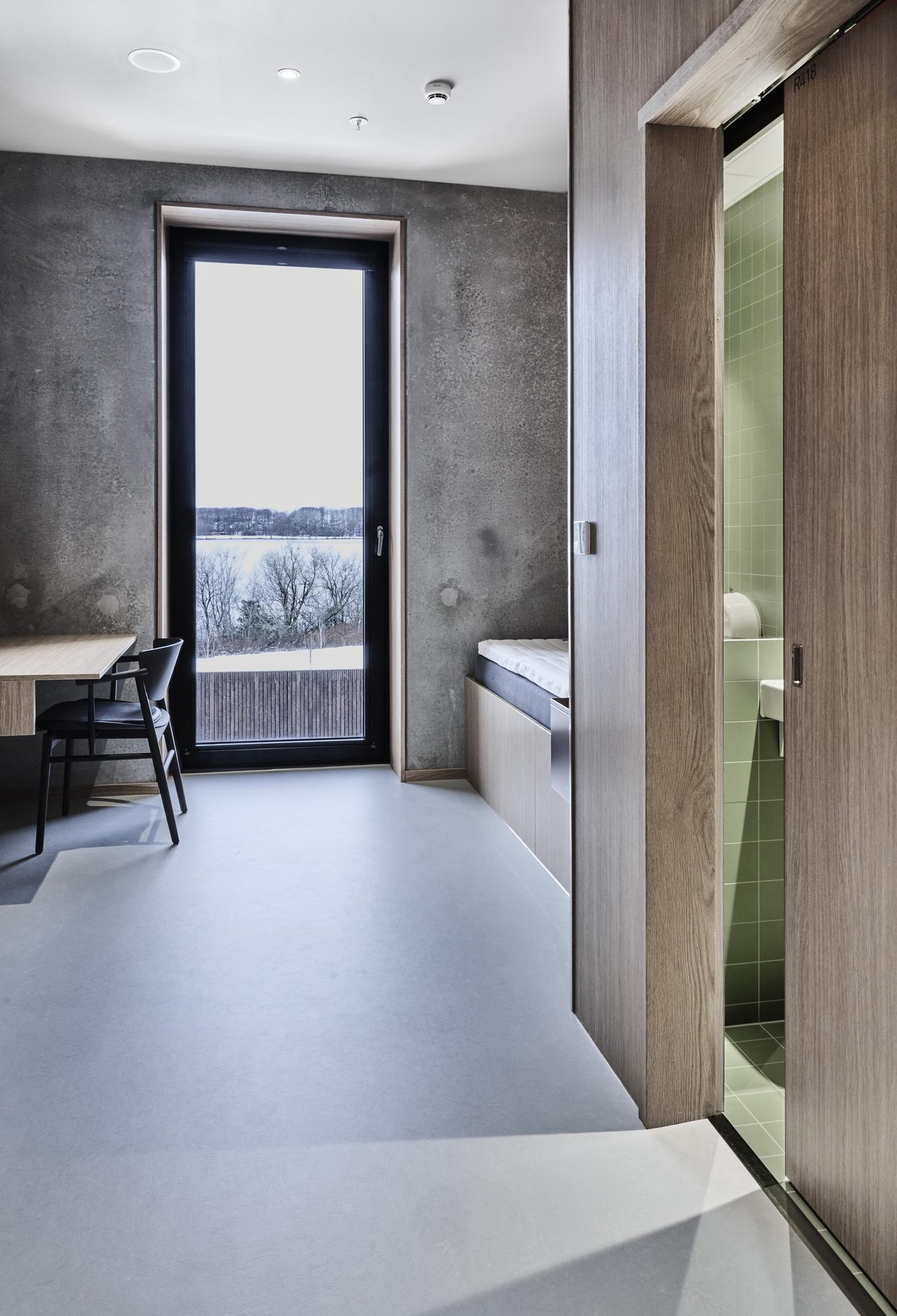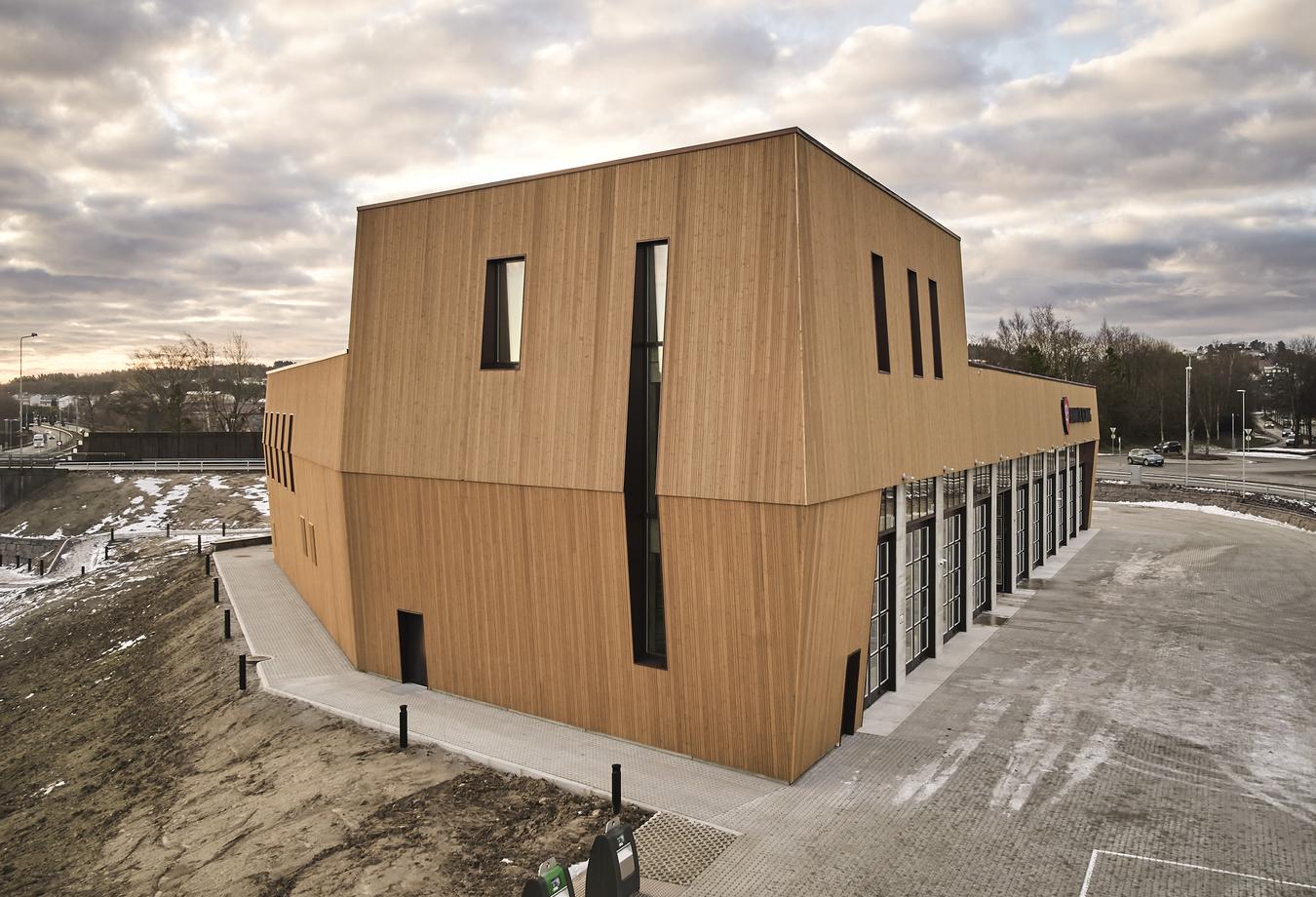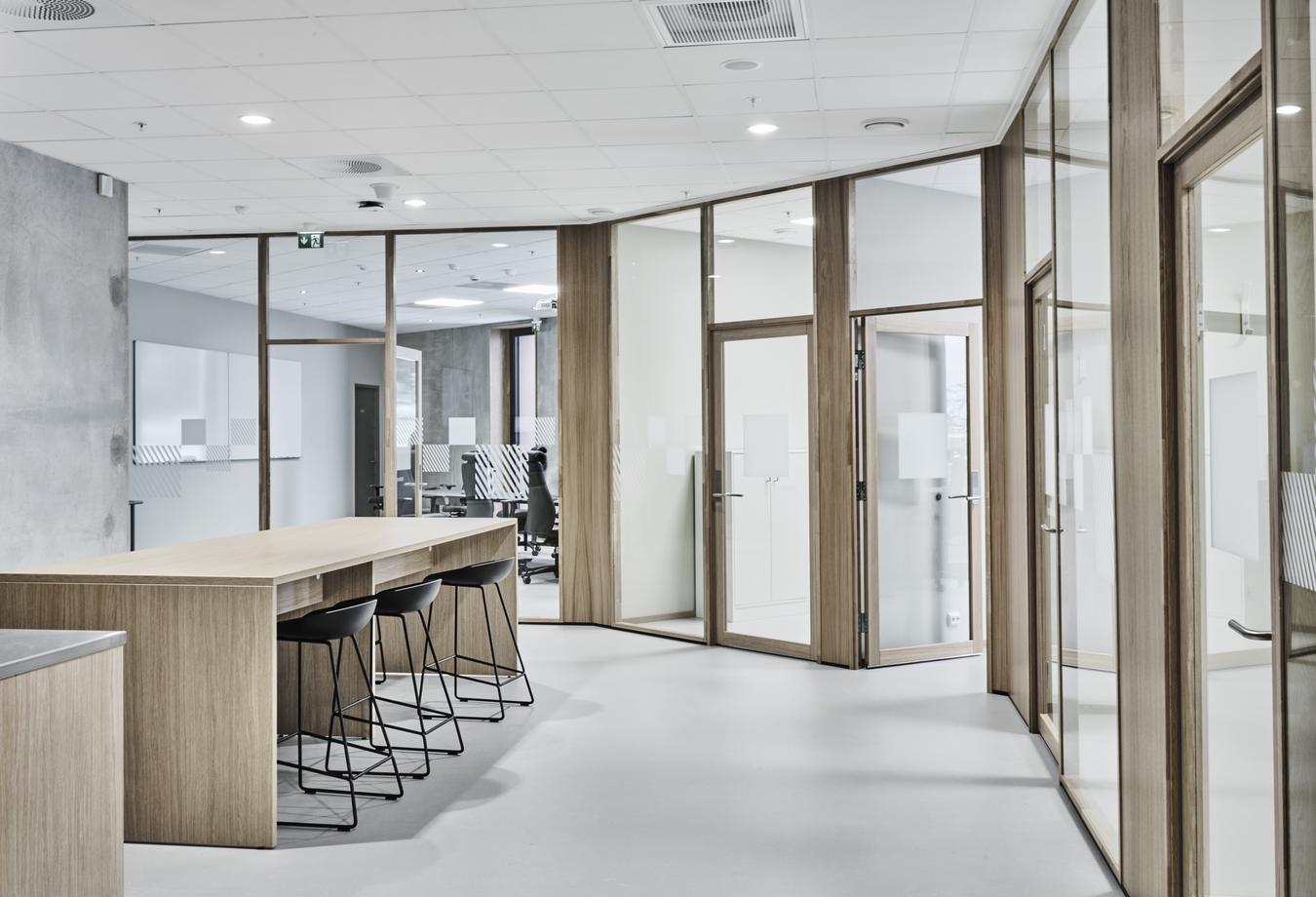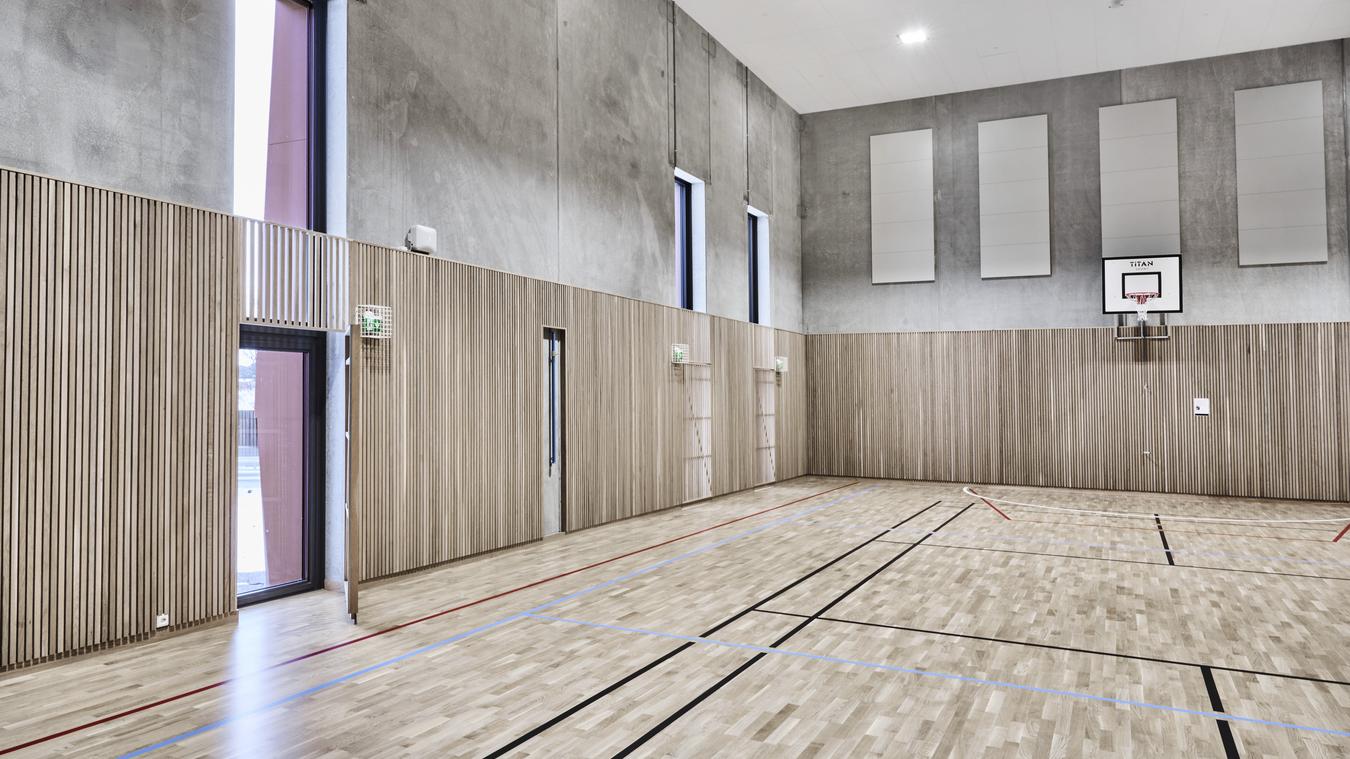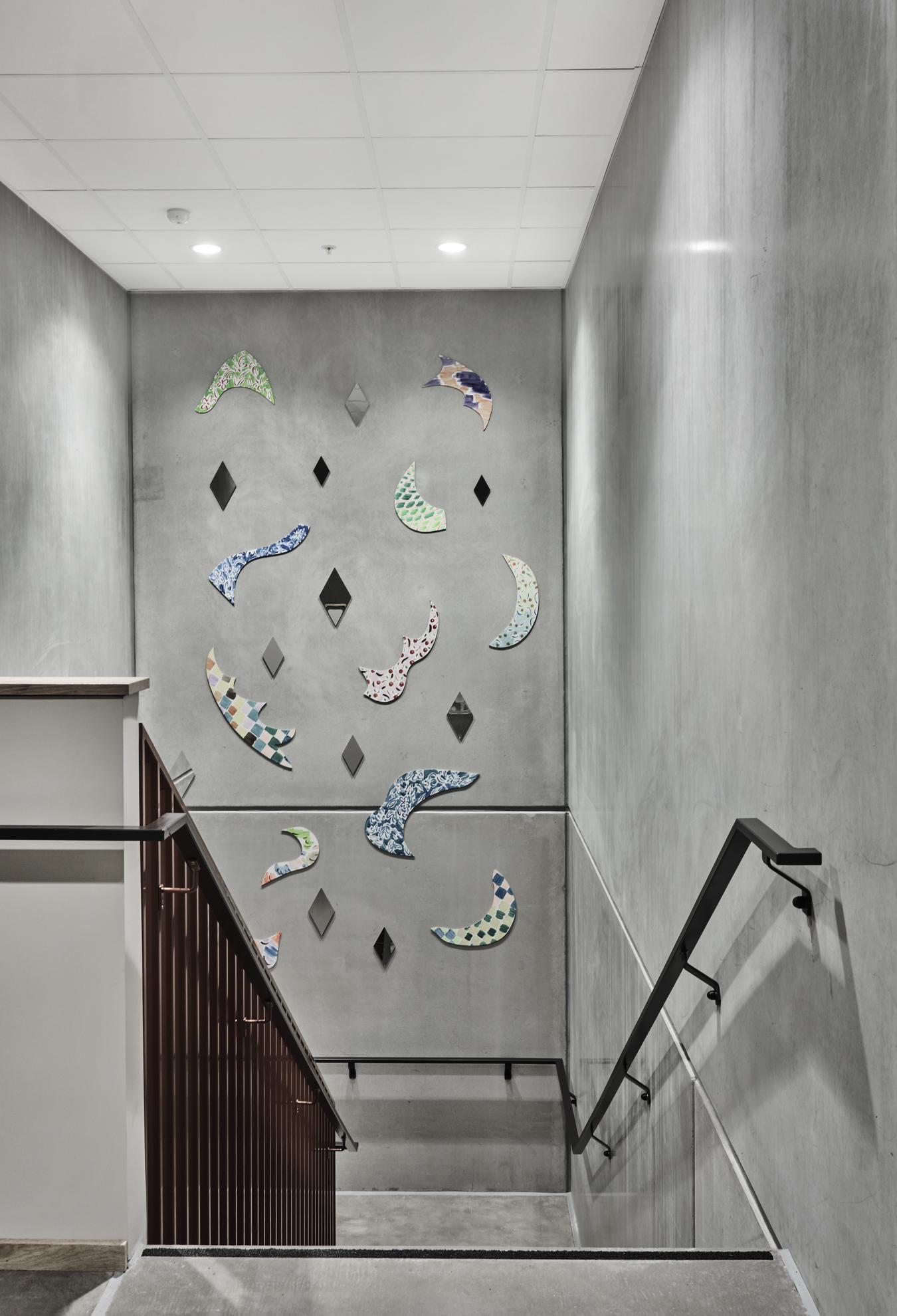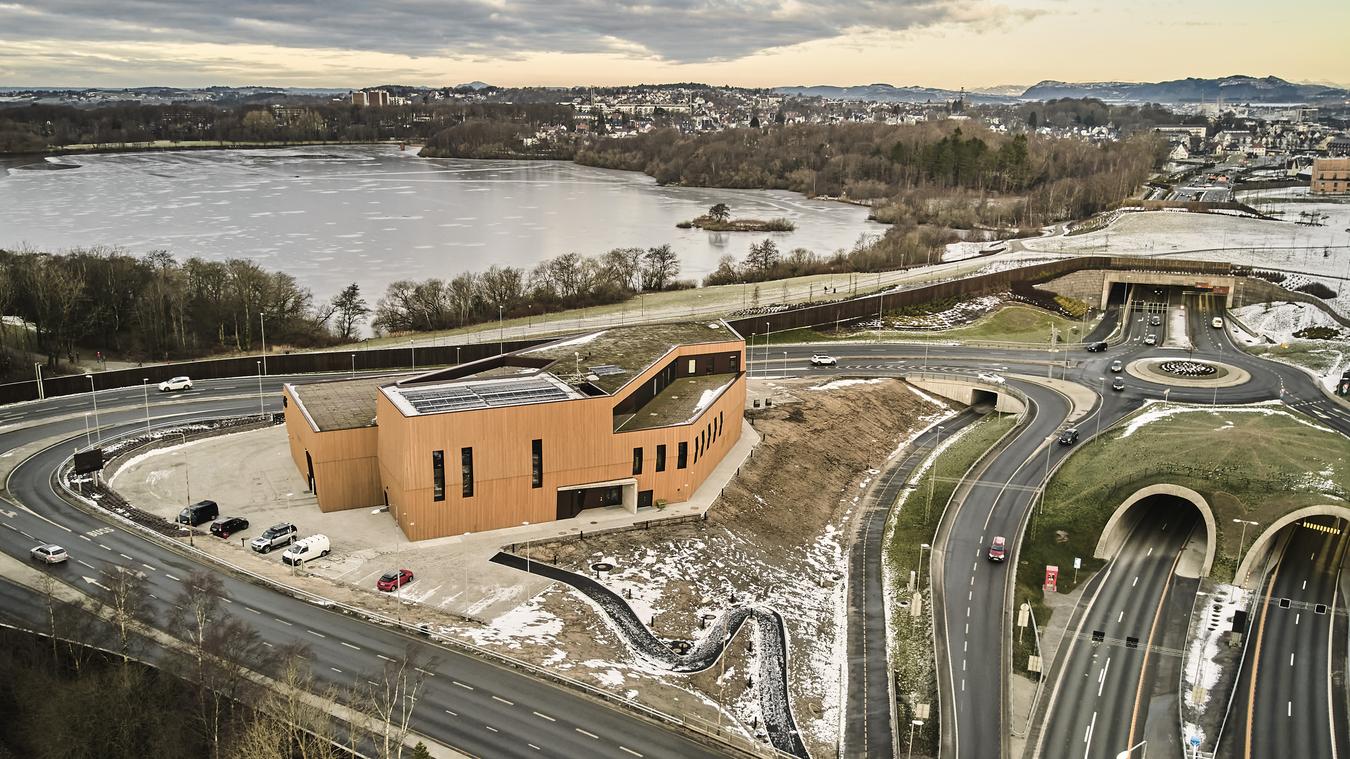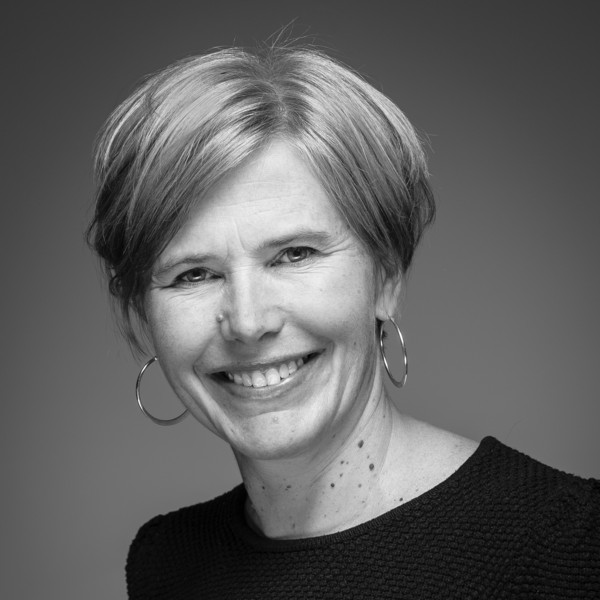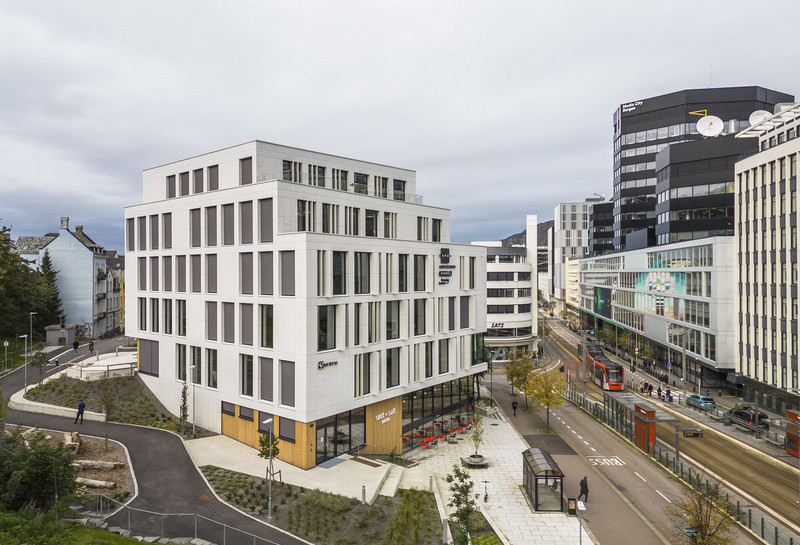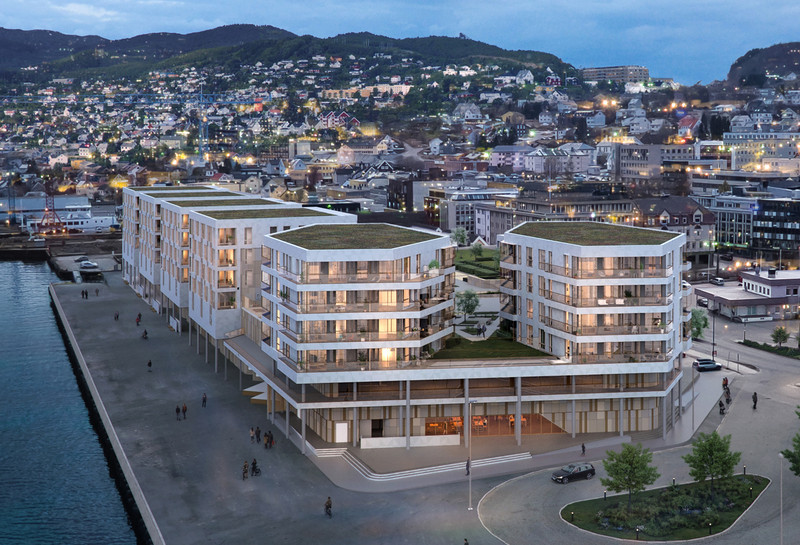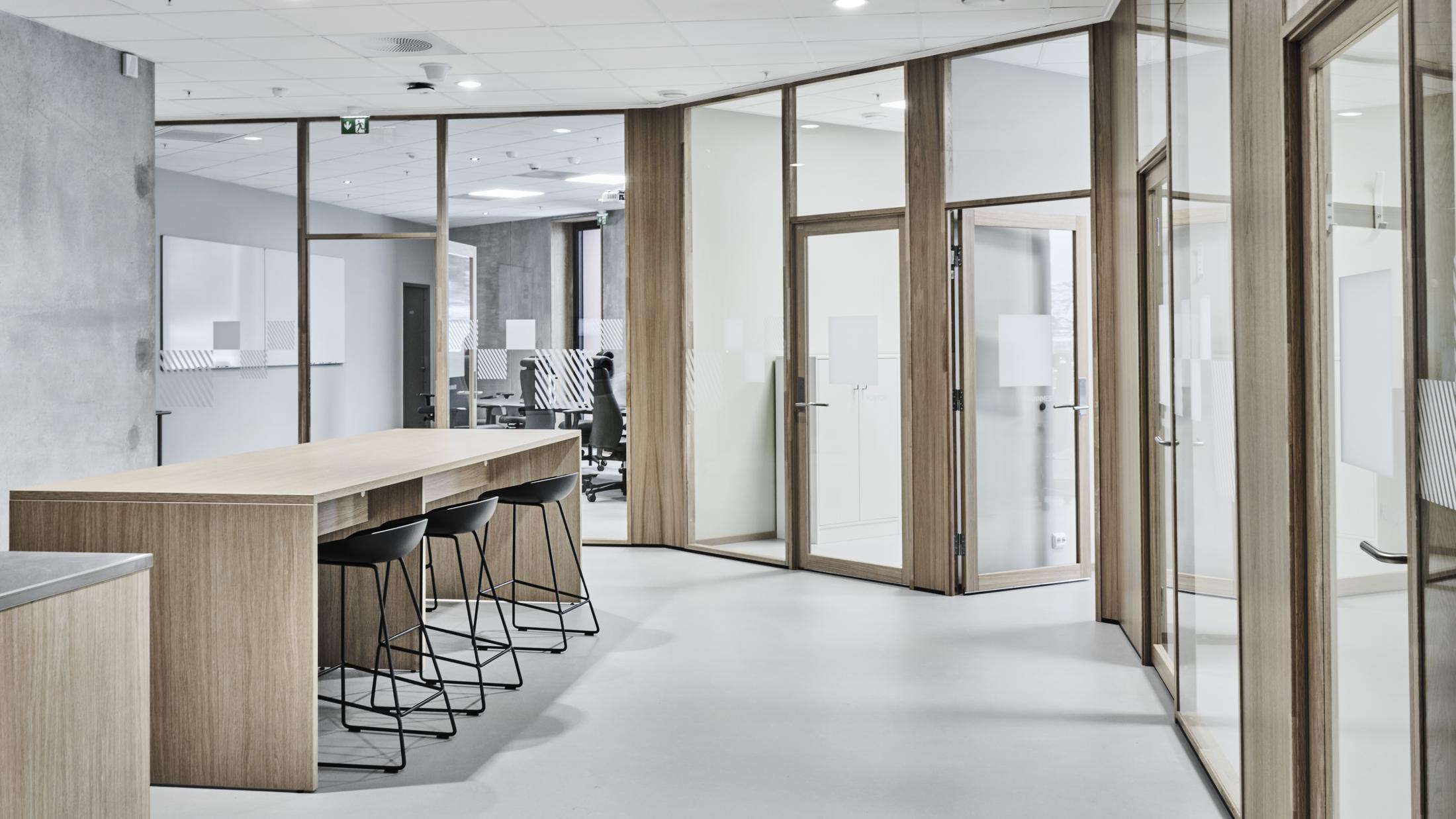
Schancheholen fire station
Modern building with high environmental requirements
The Schancheholen fire station appears as a signal building, solidly located in the core of a road network with changing surroundings. The building has a sculptural shape with a compact, efficient volume and selected sloping surfaces and carved niches at entrances and terraces.
High environmental requirements
The concept is created based on a desire to appear as a modern, environmentally friendly construction project. Stavanger Municipality set high environmental requirements for the building, including requirements for a minimum of 35% energy reduction and 60% renewable energy, as well as a 35% greenhouse gas reduction in relation to reference buildings. The building uses green roofs, solar panels on the roof over the gym, and energy wells. Extensive surface water management and native planting create a modern facility. The surrounding landscape contributes to ecological diversity in the form of plant, animal, and insect life, as well as good use of surface water and diversion.
The materials selected have been chosen with care to ensure low greenhouse gas emissions, robustness, and service life. Low-carbon concrete and recycled materials have been used, as far as possible. In addition, the building has extensive use of wood as a facade material, with cladding from Superwood and wood fibre boards from Trespa. A grain colour is used in contrast to the reddish shades in window niches, indented facades and cornices, which change character depending on sun and light conditions and contribute to a comfortable indoor environment.
Workplace and home at the same time
The user process has been at the centre of the development of the fire station. During the rotation periods, the staff spends a lot of time indoors. For the employees, the building functions as a home away from home and a workplace. LINK Arkitektur has planned for good logistics and flow at the fire station and has strived to create a warm and homely atmosphere on the top floor.
Firefighters are exposed to both smoke and chemicals, which can be harmful to health and the distinction between clean and dirty zone is very important. User participation has been the basis for how the result in the clean/dirty zone has been solved. Dirty work clothes go directly into the washing machine after an emergency. After washing and drying, it is taken to the clean area, ready for the next assignment.
Air and light for the employees
Due to heavy traffic surrounding the site, there was no "quiet zone" for positioning the crew's bedroom. The building design puts the crew's recreational areas to the top of the building. This which gives distance from traffic and noise, better lighting conditions, improved airflow, and far-reaching views. Outside the kitchen area, a panorama opens from a spacious terrace, with west-facing views of Mosvatnet and the afternoon sun on the horizon.
To the east and the noisy traffic from the highway, the building has closed areas and small window openings. To the west, the building has a more open expression. The ground floor consists of the carriage hall, with 10 emergency gates, a laundry room, a workshop, a smoke diving workshop, and an emergency wardrobe. The second floor consists of a gym, as well as parole rooms, offices, and technical rooms.
Rogaland Fire and Rescue is the user of the building.

